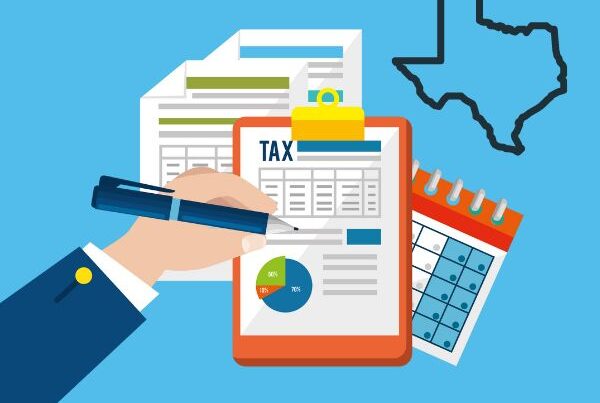Estimated reading time: 10 minutes, 13 seconds
Congratulations! If you are reading this blog about accounting for crowdfunding campaigns, you’re probably embarking on a new venture! Along with the excitement, you probably have some questions about the types of crowdfunding campaigns available to ecommerce sellers, and how to manage the accounting during and afterwards.
Crowdfunding Overview and Accounting Considerations
If you’re ready to expand your business but need to raise money to get your plans in motion, crowdfunding might be the choice for you. There are multiple platforms available on which you can host a campaign, including Crowdfunder, GoFundMe, Indiegogo, Kickstarter, and Kiva.
What is Crowdfunding and How Does it Work?
What exactly is crowdfunding though? Simply put, it’s the process of seeking donations from a crowd, i.e. current customers, potential customers, family, friends, etc…
The Process
Businesses setting up a campaign have to establish parameters, such as:
- Goal amount
- The length of time the campaign will run
- What the reward tiers (if any) will be
Please note: Some platforms will only release crowd-sourced funding if the total goal was reached. Others will release the funds even if the goal was only partially met.
The Benefits of Crowdfunding for eCommerce Businesses
One of the biggest benefit of crowdfunding is that it’s not a loan. This means businesses are not expected to repay donors for their contributions and they can use all the funding to meet their goals for expansion.
Additional pros of crowdfunding:
- Quick way to raise capital
- Funding comes from multiple investors
- Helps establish a customer base
- Usually no credit check required
- Opens lines of communication between customer base
Common Types of Crowdfunding Campaigns for eCommerce Sellers
- Donation Based Crowdfunding vs Equity Based Crowdfunding
There are two common types of crowdfunding available: donation-based and equity crowdfunding.
You’re probably familiar with donation-based funding since it’s all over social media news feeds. In donation-based campaigns, individuals can donate as little or as much as they want toward the campaign, which may or may not make them eligible for a reward.
In comparison, equity crowdfunding gives each donor equity or debt in the company.
- Reward-Based Crowdfunding
There’s also reward-based crowdfunding, in which case backers don’t just get to feel good about donating money to your campaign. They typically get rewards for donating at certain levels.
Rewards for Backers:
- Early access to new product
- Multiple products
- Higher-end versions of products
- Public shout-out/Recognition
Visit Business News Daily for more information about how to get the most out of your crowdfunding campaign.
Accounting for Income from Crowdfunding Projects
Once you’ve launched a crowdfunding campaign, successfully met your goal, and have received your funds, what’s next?
LegderGurus will take you through the steps of accounting needed:
- Track funds raised and manage contributions
- Allocate funds for different campaign expenses
- Manage backer rewards and fulfillment costs
It is important to note that this blog is specific to ecommerce businesses doing a crowdfunding campaign for consumer products, as we know there are other types of campaigns.
Track Funds Raised and Manage Contributions
Alright. You’re stoked! All your hard work has paid off. We know how much goes into a successful crowdfunding campaign. Everything from building pre-campaign email lists to creating ten prototypes before getting it right.
But the work has only begun. Now that money from backers is starting to come in, you have to start tracking funds and managing them.
Accounting for crowdfunding income is not as simple as a one-time revenue entry if you are trying to account for things “correctly.” We wish a one-time entry would work, but it doesn’t.
As stated on Kickstarter, and similar to other crowdfunding platforms, creators’ “fundamental obligation to backers is to finish all the work that was promised. Once a creator has done so, they’ve fulfilled their obligation to their backers.”
Click here for more about creator obligations from Kickstarter.
So, when you receive funds, you are now under an obligation, or liability, to fulfill the promised reward. All the money you received has not been technically “earned” at this point. Therefore, these funds are recorded as “unearned revenue” (a current liability), until the product has shipped. This is referred to as “deferring revenue”.
There is a simple method or a more complex method to defer your crowdfunding campaign revenue.
Simple Method of DEFERRING Revenue
To keep the accounting for crowdfunding simple, you can just record the amount that hits your bank account from your crowdfunding campaign:
Complex Method of DEFERRING Revenue
Although the simple method works, some fees need to be deducted from the amount that was pledged on Kickstarter before funds hit your bank account (so yes, don’t be surprised when the Kickstarter deposit is less than you are expecting).
Incidentally, here is an example of how we would record the journal entry for Kickstarter clients:
Comparing the Methods
Which crowdfunding accounting treatment method do we recommend? In both methods, your ultimate impact on net income, and therefore your taxable income, is the same. Therefore, if you are only recording the journal entry for these purposes, keep it simple and record only the net amount you see deposited in your bank account.
On the other hand, if you are planning to sell your company soon, or you simply appreciate a higher level of detail, then go with the more detailed method. Many business valuations are based on top-line revenue, and the total amount raised by your crowdfunding campaign was rightly raised by your company, as revenue. You would want this full amount reflected, resulting in a higher valuation for the sale of your business. We have seen the difference between the total amount raised and the amount deposited equate to several hundred thousand dollars for a company that was looking for an exit. This can be a big deal!
Allocate Funds for Pre-Launch and Campaign Expenses
Anything that you have to pay for before your venture is up and running is considered a pre-launch expense. This could be the cost of renting or purchasing office or manufacturing space, warehouse costs, hiring employees, or advertising. Do you want to build pre-launch expenses into your crowdfunding campaign, or do you have the capital for those expenses already?
You’ll likely need to monitor and adjust your expenses as the campaign progresses and adapt financial projections.
Manage Backer Rewards and Fulfillment Costs
After receiving the campaign funds, you should then be running around like crazy to source and fulfill your promised reward. Sourced products that you are holding onto as inventory should be recorded as inventory, on the balance sheet:
For more on how to calculate the value of your inventory, check out this article: A Road Map for Good Inventory Management.
Unfortunately, crowdfunding platforms don’t collect your backers’ shipping addresses for you. You will need to be collecting shipping addresses during this phase. To do so, we highly recommend BackerKit, if you are not already using it. BackerKit is a great resource to help creators with all their campaign needs.
Shipping Product
After sourcing your product and collecting addresses, you are ready to ship your product. From our experience, you have received about 80% of your backers’ shipping addresses when you make your first shipment, and the other 20% will trickle in over the next few months.
When a product is shipped, then you can record “revenue” on your books, and decrease your current liability of “unearned revenue.” This process looks different, depending on whether you used the simple method or the complex method described above.
Simple Method for RECOGNIZING Revenue
If you used the simple method of recording “unearned revenue”, then the journal entry to recognize that “revenue” is simple as well:
You may be thinking it would be ridiculous to make a journal entry for each backer’s order that is fulfilled, and you’re right. We are accountants, but we aren’t that crazy! We like to follow this monthly process:
- Calculate the average amount of revenue per backer (total revenue you are tracking divided by the number of backers).
- At the end of each month, use BackerKit to see how many backers you have shipped products to.
- Multiple the number of backers (step 2) with the average amount of revenue per backer (step 1), for your monthly revenue.
- Record a monthly journal entry for “revenue” and “unearned revenue” (based on the calculation in step 3).
Complex Method for RECOGNIZING Revenue
If you used the more complex method of deferring revenue, then step 4 just described gets hairy. Instead of one deferred bucket, you had about six that you need to recognize at this point.
Honestly, if you decided to use the more complex method, you should probably have an accountant tracking this for you (that’s us, we’re good at this stuff).
An in-depth discussion of how to do this is beyond the scope of this article, but a qualified accountant would be able to see what we’re trying to accomplish and move it forward for you.
The entry to recognize everything would look like this:
Accounting for COGS and Inventory
In addition, with either method, you will also need to relieve inventory and account for COGS when you ship the product:
For more on calculating COGS and inventory, read this guide: Cost of Goods Sold – A Key Number for eCommerce Businesses.
After a certain period, if backers haven’t responded with a shipping address, creators no longer have an obligation to send their reward. Your financial and legal requirements are technically met, and you can recognize the rest of your “unearned revenue” or “crowdfunding liability” as “revenue.”
Manage Cash Flow and Budget for Crowdfunding Success
It’s important to manage the influx of cash you receive in your campaign, and to set yourself up for future success. How can you make sure you’re on the right path when it comes to accounting for crowdfunding and beyond?
Establish a Clear Cash Flow Plan
Do you know what your business’s cash flow cycle is? When does money move in and when does money move out? Knowing where you stand helps ensure you can pay employees and invoices without delay, even if there are hiccups in the cash flow cycle. The common sources of cash flow are:
- Operations
- Investments
- Financing
Some of the best ways to optimize your cash flow are to always pay on time, negotiate with vendors, and establish business credit. You also need to make it easy for customers to pay you, so be sure to optimize your receivables process.
Learn more here: Cash Flow Management for Small Businesses.
Tips for Accurate Financial Forecasts
- Establish your baseline
- Focus on meaningful data
- Forecast different scenarios
- Invest in good accounting tools and practices
- Work from either top-down or bottom-up
- Focus on short-term planning
- Be willing to pivot
Manage Backer Expectations
Be clear about what’s in it for the backers of your crowdfunding campaign. Then, when the campaign goal is met, everyone is on the same page when it comes to any applicable rewards or recognition. During and after your campaign, be sure to keep your backers in the loop with updates.
Indiegogo has a great article that may help: Tips on How to Manage Backer Expectations.
Key takeaways:
- Communicate
- Be Transparent
- Deliver Promised Perks
Tips for Maintaining Financial Health After a Successful Crowdfunding Campaign
Before celebrating with your team, it’s important to focus on imperative steps after your successful crowdfunding campaign. Namely, continuing to engage with your backers.
Engage with Backers
All your backers should receive not only your heartfelt thanks but any perks you promised. Stay active on your social media and website so backers know you’re hard at work moving forward with your project. The last thing you want backers to think is that you’ve taken the money and run! Share behind-the-scenes of development, product production, and the ETA for its release.
Build a Sustainable Financial Strategy Post-Campaign
The key to maintaining financial stability after your campaign is to diversify your revenue. Continue to push existing income streams (such as existing products or services) so you’re not fully reliant on crowdfunding.
Also, make sure you’re keeping accurate sales records so you can forecast what you’re likely to need moving forward. We’ve got an inventory forecasting Excel template that can help you with that.
Post-crowdfunding campaign accounting
This blog should give you the direction you need in accounting for your successful crowdfunding campaign. And if you can build a business around your product, this is just a glance into the crazy fun that you’ll experience with ecommerce accounting. When you’re ready to have someone else do your ecommerce accounting, make sure to let us know. That is LedgerGurus’ specialty!.
Frequently Asked Questions
- Does crowdfunding count as revenue?
The proceeds generated from crowdfunding are usually categorized as gross income.
- Is income from crowdfunding taxable?
If the money raised during your campaign is given without donors receiving anything in return, it’s considered a non-taxable gift. If you offer perks for donors, their donations are considered taxable income.
- Are Kickstarter funds considered income?
Funds generated via Kickstarter are typically taxable and are therefore considered income.
- What type of financing is crowdfunding?
Crowdfunding can be considered a donation, a loan, debt-based, or equity-based financing.
- Is crowdfunding debt or equity?
It can be either type of financing.
Debt-based crowdfunding: You receive capital from investors with pre-determined repayment terms.
Equity-based crowdfunding: You offer shares of company ownership in exchange for backing.












